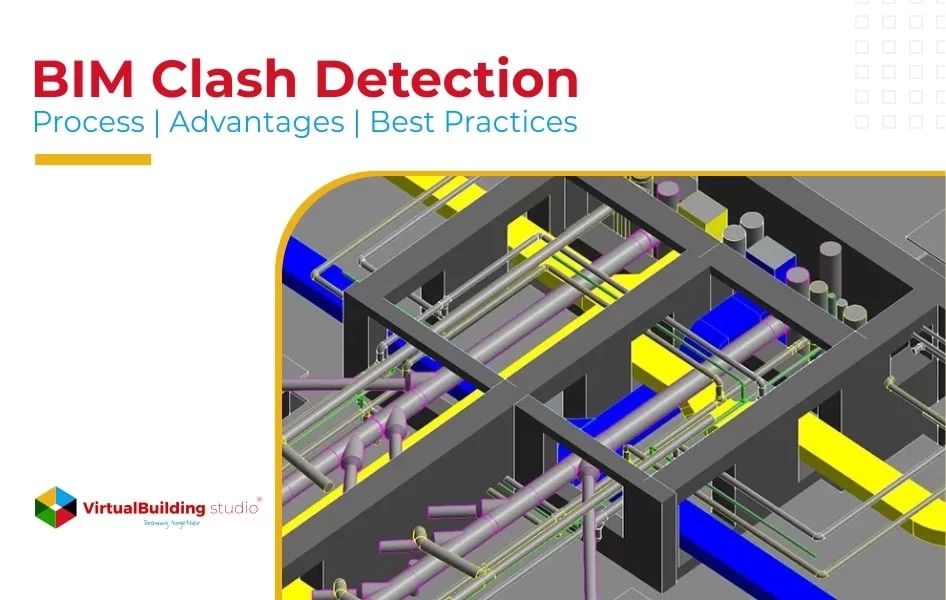BIM Clash Detection: Process, Advantages and Best Practices
BIM Clash Detection: Process, Advantages and Best Practices

What is Clash Detection in BIM?
Architectural projects are a concoction of multi-disciplinary trades such as Structure, MEPF, Interior, Landscape, and much more. BIM Clash Detection services encompass the identification and resolution process of clashes between these various trades.
Cause of Clashes in the BIM Model
The expert engineers of that particular niche execute the process of BIM Modeling for various trades. When these different models are juxtaposed together, clashes between every model come to the fore. An architectural set is the first layout designed to mark the initiation of a project.
- Using the wrong low Level of Detail while modeling
- Design uncertainties or failures
- Working on a 2D format instead of a 3D BIM model
- The time constraints lead to a lack of accuracy
- The elements of the 3D model exceed the clearance values
- Building the project model by team members who lack expertise in the concerned domain
Benefits of BIM Clash Detection services for AEC stakeholders
Increased Accuracy in Installations and Project Drawings
Reduced Iterations During Installation On-Site
Minimized Onsite Risks and Reduced Wastage
Clash Free 3D BIM Models with Increased Efficiency
Types of Clashes in BIM
The architectural, structural, and MEP layouts pose various types of clashes. BIM clash detection services and MEP clash detection services help in identifying and resolving these clashes leading to error-free project execution. The different types of clashes deduced while BIM modeling are –
Hard Clash
Soft Clash
Workflow Clash
The Adaptable Strategies for AEC stakeholders to Eliminate Clashes
- Integrating construction, engineering, and procurement
- The amalgamation of BIM with traditional workflows
- Enhanced communication and collaboration among designers in a common workspace
- Working in a common data environment (CDE) and adopting design coordination
The Significance of BIM Clash Detection Services
Source: https://www.virtualbuildingstudio.com/bim-clash-detection-process-advantages-and-practices/












